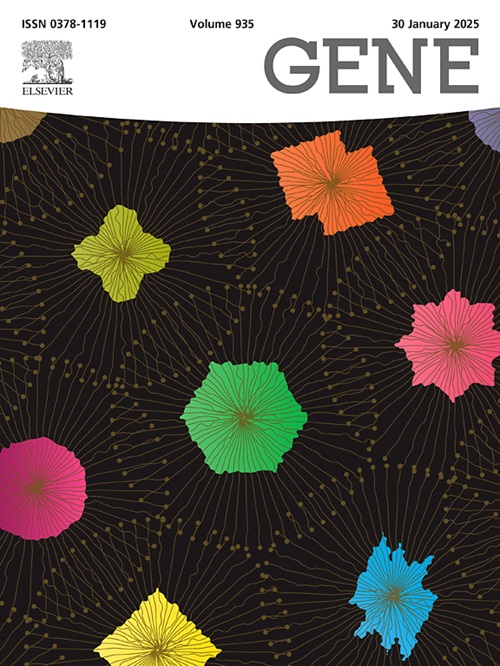Effects of Carrier’s sex on the outcome of embryos and pregnancies in 412 couples undergoing preimplantation genetic testing for structural rearrangements
IF 2.6
3区 生物学
Q2 GENETICS & HEREDITY
引用次数: 0
Abstract
Study design
To ascertain whether the carrier’s sex affects the outcome of embryos and pregnancies in couples undergoing preimplantation genetic testing for structural rearrangements (PGT-SR).
Methods
This retrospective study comprised 412 couples with reciprocal translocations (RecT), Robertsonian translocations (RobT), or inversions (INV) between January 2017 and October 2022. We applied next-generation sequencing (NGS) on 2588 embryos after trophectoderm (TE) biopsy.
Results
Genetically transferable blastocyst rate was higher in the male carrier group (34.0 % vs 31.7 %, P = 0.013) relative to the female carrier group whereas other embryo and pregnancy outcomes remained similar. Further analysis revealed that this result was primarily due to the alteration of segregation patterns in the RobT subgroup, in which the proportion of alternate segregation was higher (84.3 % vs 66.4 %, P < 0.001) in male carriers compared with female carriers. In the RecT subgroup, the genetically transferable blastocyst rate between male and female carriers was similar although the segregation models also changed, such that the frequency of the adjacent-1 segregation pattern was higher in male carriers than in female carriers (42.5 % vs 34.7 %, P = 0.002). In addition, interchromosomal effect (ICE) did not differ between male and female carriers although ICE was lower in male carriers of the RobT subgroup (pure ICE: 35.50 % vs 44.30 %, P = 0.14; total ICE: 35.50 % vs 40.30 %, P = 0.32) and higher in male carriers of the INV subgroup (pure ICE: 42.3 % vs 37.20 %, P = 0.33; total ICE: 40.90 % vs 36.00 %, P = 0.36).
Conclusions
The carrier’s sex was closely associated with the genetically transferable embryo rate in couples undergoing PGT-SR, principally resulted from the change in segregation pattern in the RobT subgroup but not in the RecT and INV subgroups.
在 412 对接受植入前结构重排基因检测的夫妇中,携带者性别对胚胎和妊娠结果的影响。
研究设计:目的:确定携带者的性别是否会影响接受植入前结构重排基因检测(PGT-SR)的夫妇的胚胎和妊娠结果:这项回顾性研究纳入了2017年1月至2022年10月期间412对患有互变(RecT)、罗伯逊易位(RobT)或倒位(INV)的夫妇。我们对滋养层(TE)活检后的2588个胚胎进行了新一代测序(NGS):与女性携带者组相比,男性携带者组的遗传可移植囊胚率更高(34.0% vs 31.7%,P = 0.013),而其他胚胎和妊娠结果仍然相似。进一步分析表明,这一结果主要是由于 RobT 亚组的分离模式发生了改变,其中交替分离的比例更高(84.3% 对 66.4%,P 结论:RobT 亚组的分离模式发生了改变,其中交替分离的比例更高(84.3% 对 66.4%,P 结论:RobT 亚组的分离模式发生了改变,其中交替分离的比例更高):在接受 PGT-SR 的夫妇中,携带者的性别与遗传可移植胚胎率密切相关,这主要是由于 RobT 亚组的分离模式发生了变化,而 RecT 和 INV 亚组则没有发生变化。
本文章由计算机程序翻译,如有差异,请以英文原文为准。
求助全文
约1分钟内获得全文
求助全文
来源期刊

Gene
生物-遗传学
CiteScore
6.10
自引率
2.90%
发文量
718
审稿时长
42 days
期刊介绍:
Gene publishes papers that focus on the regulation, expression, function and evolution of genes in all biological contexts, including all prokaryotic and eukaryotic organisms, as well as viruses.
 求助内容:
求助内容: 应助结果提醒方式:
应助结果提醒方式:


